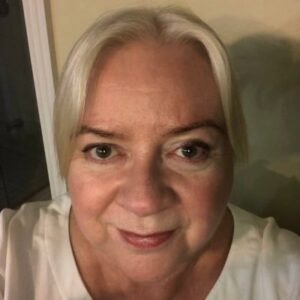While Pride is certainly meant to be a time of celebration—for all that our world has achieved in the way of 2SLGBTQ+ rights—it’s also a reminder of how much further we need to go. With this in mind, OSPE held an allyship webinar on June 15, 2021 with Anne Creighton, President of Toronto Pflag to discuss the ways in which we can all be better allies and ensure that the engineering profession may continue to move towards a truly diverse and inclusive community for all.
Pflag’s purpose is twofold: to support the families of 2SLGBTQ+ individuals, and to further community education. Creighton demonstrated the power and importance of allyship by sharing the story of her own daughter’s coming out journey, and that of Wren Kauffman, a transgender boy whose little sister’s support and that of his community contributed to changing legislature that allowed trans people to change the gender marker on their birth certificates, starting at the age of 12 in Alberta.

A number of studies have been conducted to gauge what percentage of the population identifies as 2SLGBTQ+ but due to a variety of factors like changing public opinion, sample sizes, the specific wording of survey questions and more, this statistic has been difficult to pin down and different studies often produce different results. Pflag’s presentation cites a study by non-profit group, The Jasmin Roy Sophie Desmarais Foundation which explains that approximately one in four people self-identify as 2SLGBTQ+ but in reality, this number could be higher still. According to the study, about 26% of 18 to 34 year-olds identify as 2SLGBTQ+ whereas only 8% of those aged 35+ self-identify as such. These results are likely skewed due to the years of discrimination that many individuals in older age groups would have witnessed firsthand. “Many of these folks saw their friends and loved ones being arrested, losing their jobs, or worse for being who they were,” says Creighton. “So, they don’t feel comfortable coming out, even anonymously, to a pollster.” Regardless of what the actual number is, we know that the underrepresentation of gender and sexual minorities is exacerbated even further in STEM fields.
The academic journal, Science Advances, published a report illustrating the disparities in five dimensions of inequality experienced by 2SLGBTQ+ professionals in STEM careers. These included career opportunities and resources, professional devaluation, social exclusion, health and wellness difficulties, and intentions to leave STEM. On all five of these fronts, 2SLGBTQ+ STEM professionals were shown to experience greater disadvantage. In alignment with these findings, Creighton says that the most common place in which people experience harassment based on their sexual orientation or gender identity is at work. Nearly 30% of 2SLGBTQ+ respondents to an In & Out study of Canadian workplaces reported experiencing discrimination in the workplace as opposed to just 2.9% of the general population (Pride at Work, 2017, p. 5).
Having the allyship of their straight cisgender (those whose gender identity aligns with the sex they were assigned at birth) colleagues is critical in combatting such discrimination. Creighton shared the following key pointers on how supervisors and colleagues can build a safe space for 2SLGBTQ+ employees through informed allyship:
- We know that systemic change of any kind typically occurs from the top down. Therefore, it is important for leaders to openly and sincerely demonstrate their support for employees who come out at work; it models acceptance and encourages others to follow suit.
- Have 2SLGBTQ+ centred events throughout the year, not just during Pride Month, and avoid the phenomenon of “rainbow washing”—when people, governments, or corporations use pride flags or rainbow coloured logos during Pride Month without actually making any tangible effort to support the community.
- Use the pronouns (he/him, she/her, they/them) that a person indicates. Deliberately misgendering a person is a form of harassment and should never be tolerated.
- Create a written policy that bans discrimination on the basis of sexual orientation, gender identity, and gender expression.
- Understand and accommodate for the fact that the medical needs of individuals who are transitioning may require them to take additional time off work.
- Call out homophobic/transphobic language when you hear it and speak up for your 2SLGBTQ+ colleagues even when they are not around to hear it.
- Use visual indicators like rainbow-coloured buttons, flags, and posters around your office or cubicle to show that the environment is a safe space for the community.
- Consider patronizing 2SLGBTQ+ owned businesses and attending Pride events.
Employer Resources
Other invaluable resources for employers seeking to better support their 2SLGBTQ+ staff include:
- Pride at Work Canada
- Virtual ProPride: Beyond Equity Towards Justice (virtual event hosted by Pride at Work Canada)
- Toronto Pflag
- Pflag Canada
- EngiQueers Canada
- The 519
- Egale
- Ontario HIV Treatment Network
- Out and Equal
In October of 2021 OSPE will be hosting our first ever annual Engineering Conference, with a multitude of resources for STEM employers looking for ways to attract and retain diverse engineering talent. Engineers know that we can have a far greater impact by embracing all aspects of diversity dimensions, including sexual orientation and gender identity. The engineers on OSPE’s Diversity and Inclusion Task Force advocate for a profession in which all such diversity dimensions are accepted and celebrated. For more information on OSPE’s diversity and inclusion efforts click here.




Leave a Comment